Introduction
Risk management is the process through which the managers of a certain organization are able to ascertain and identify the areas in their organization that are vulnerable to risks. It also involves the measures that such an organization takes to either avoid its occurrence or apply measures that will effectively handle the risk.
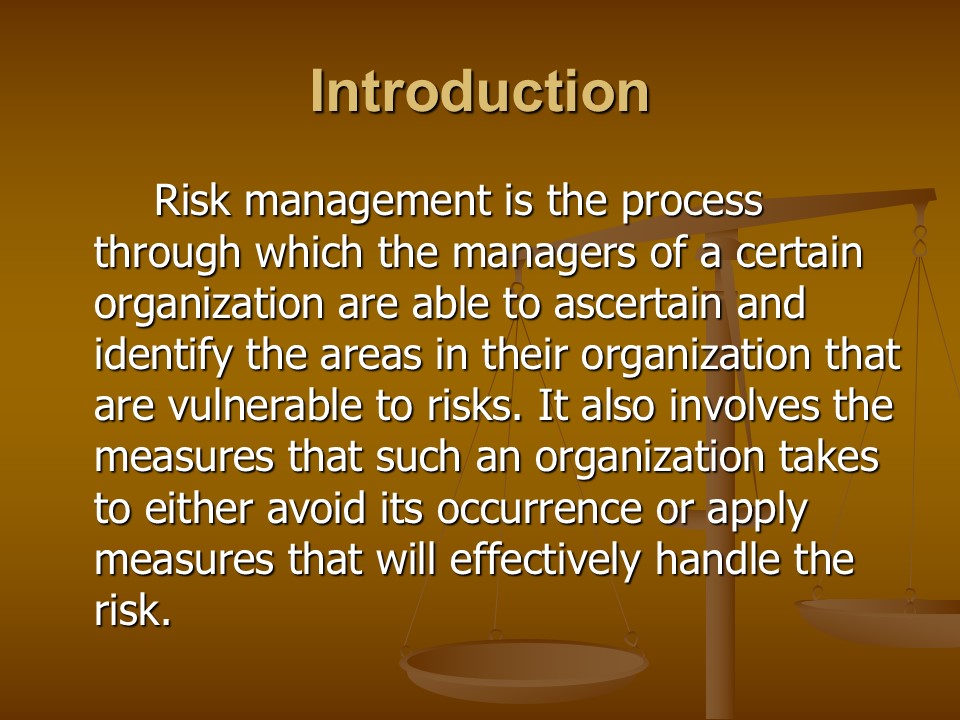
Key Elements
- Risk policy and governance;
- The risk function;
- Daily risk management;
- Risk information system;
- Capital management;
- Internal audit (Crouhy, 2000).
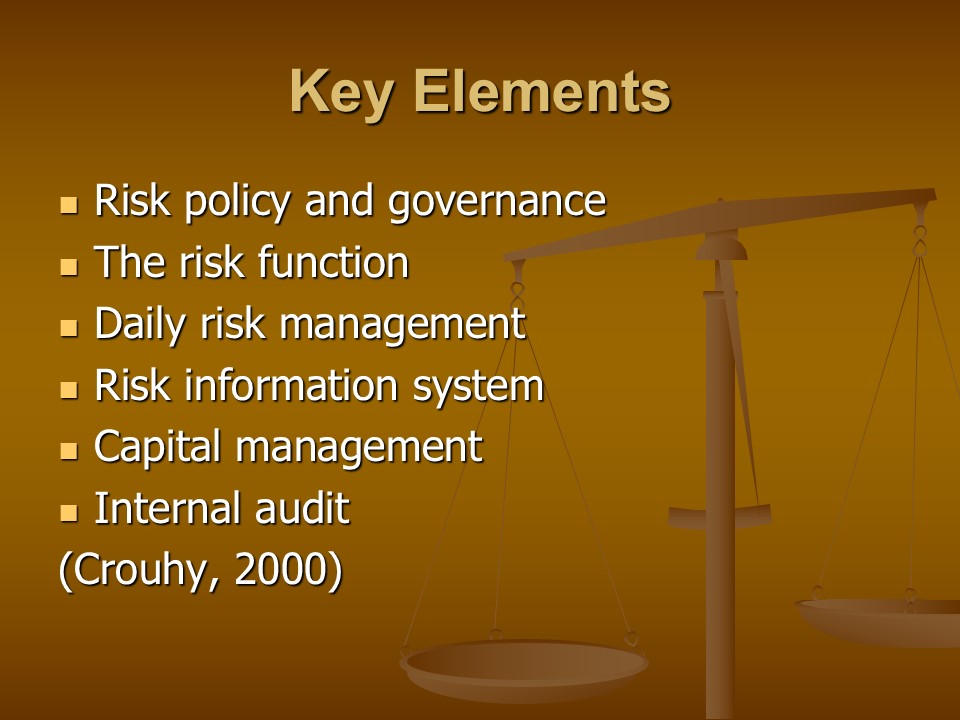
Risk management procedure
- Risk management starts from the top;
- The risk management process should be incorporated into a system design;
- The most important risks should be addressed first;
- Let the entire staff participate in the process;
- Risks should be managed continuously using a feed back loop;
- Managerial procedures should be reported to the board (Pohlman, 2008).
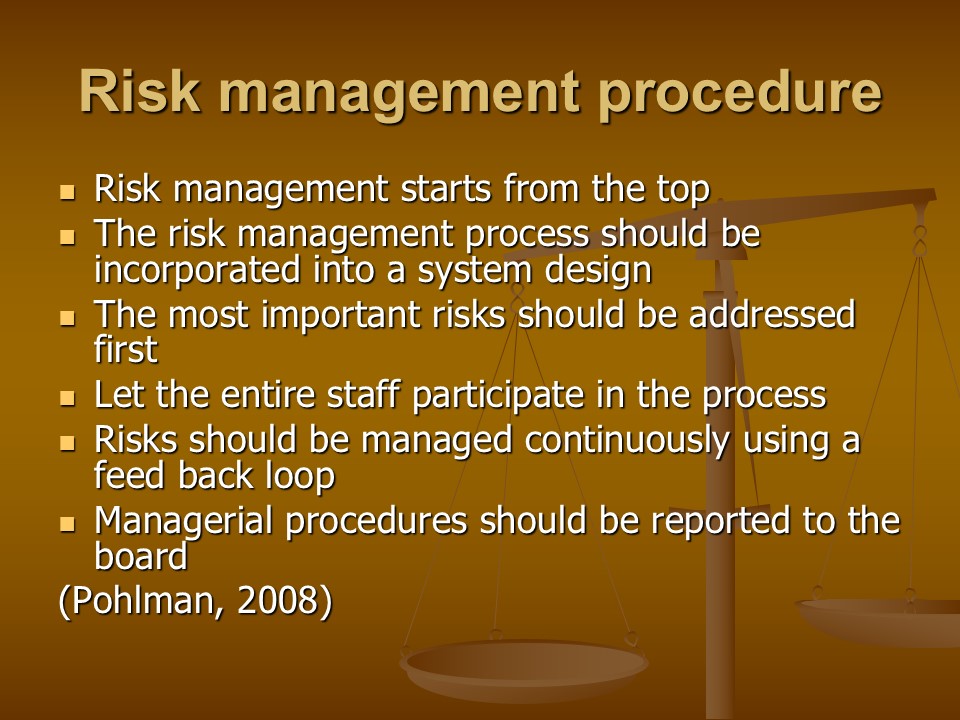
Risk identification
- Have a database that outlines the different possible risks;
- The different tools and techniques of handling the risk;
- The main causes of the identified risks;
- The situations through which the risks occur (McKeeve, 2007).
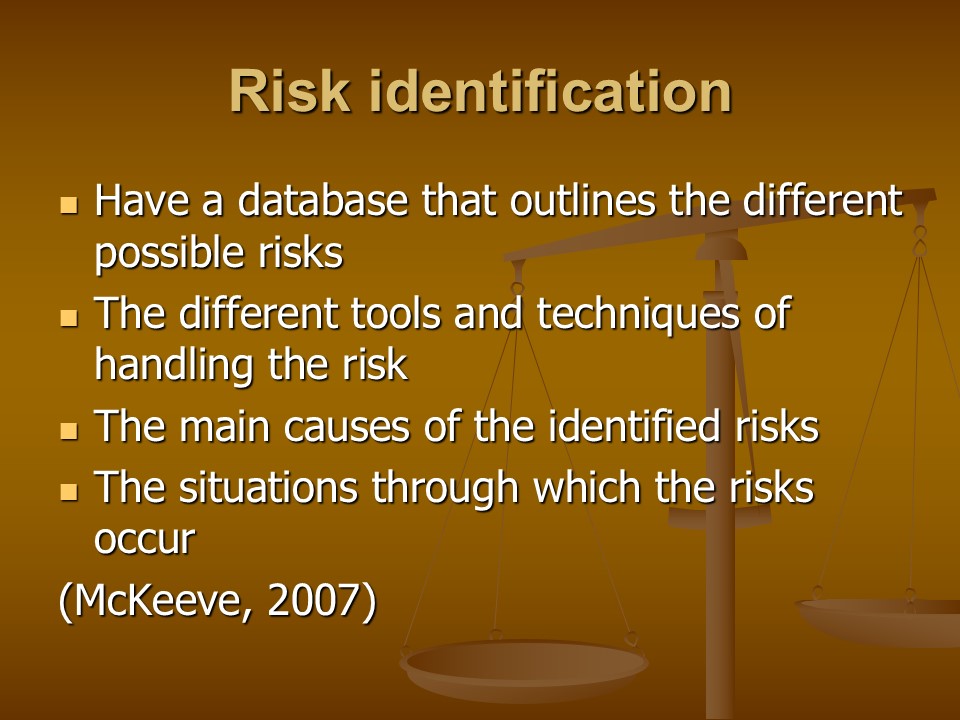
Risk assessment
- The likelihood of the occurrence of the risk;
- The possible loss that the risk may realize;
- Statistical analysis of the identified risks;
- Prioritize the risks starting with the most urgent;
- The assessment of risks should be an ongoing process (Culp, 2001).
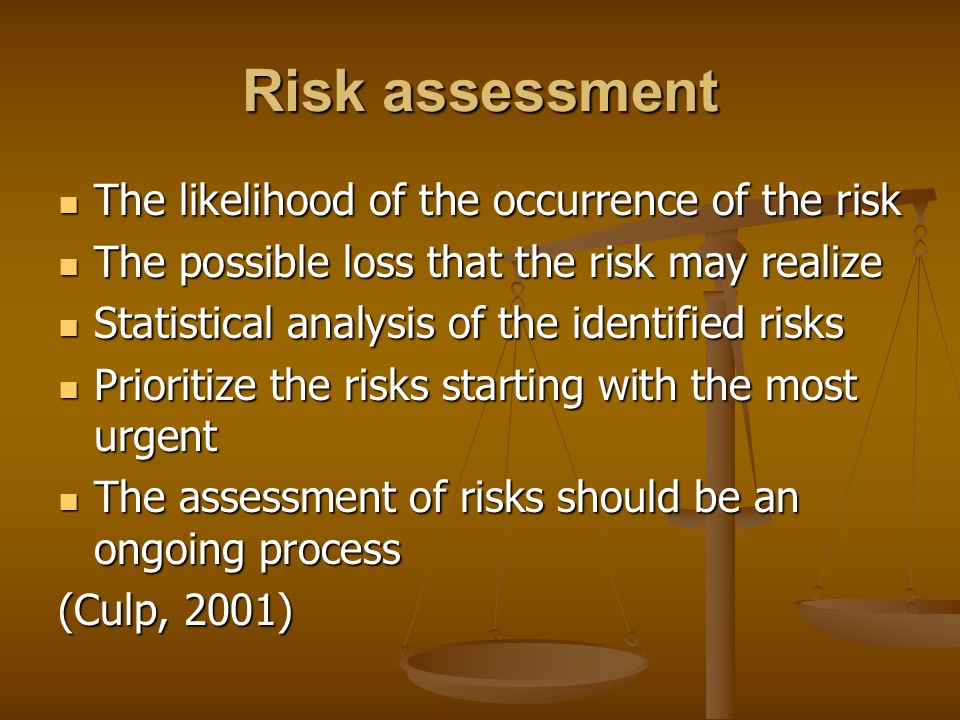
Risk control
- Determine the possibility of avoiding or controlling the risk;
- Review all the measures that can be applied to control the risk;
- Review and utilize all the insurance policies that may be applicable;
- Ensure that the right insurance covers are applied for (Kerzner, 2009).
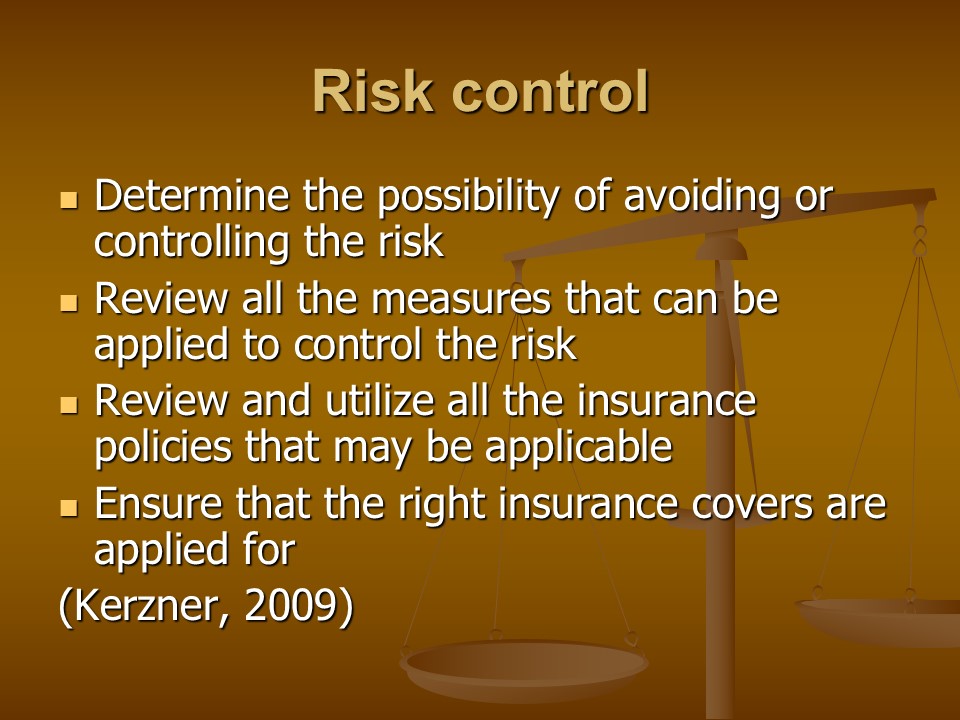
Risk monitoring
- Identify the areas that may facilitate the occurrence of a risk;
- The entire management and the staff should be aware of the such areas;
- The staff should be trained on the possible measures to take incase of a risk;
- Handle the risks at their earlier stages.
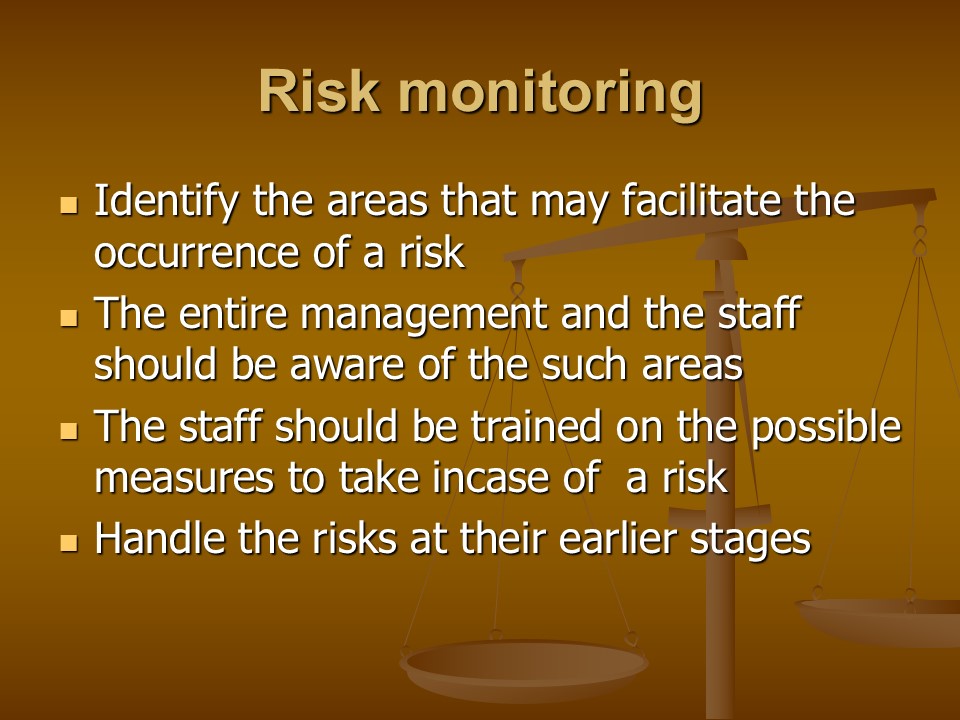
Planning
- Ascertain the finances that may be required for each project;
- Allocate the funds putting into consideration the additional expenses;
- Make sure that the allocated funds are at least higher than the expected expenses;
- Collect adequate information on how similar projects have been managed;
- Have both information on similar projects that succeeded and failed;
- Find out what made the successful one to prosper and the others to fail;
- Borrow some skills from the experts;
- Involve a professional economist to predict the economic trend.
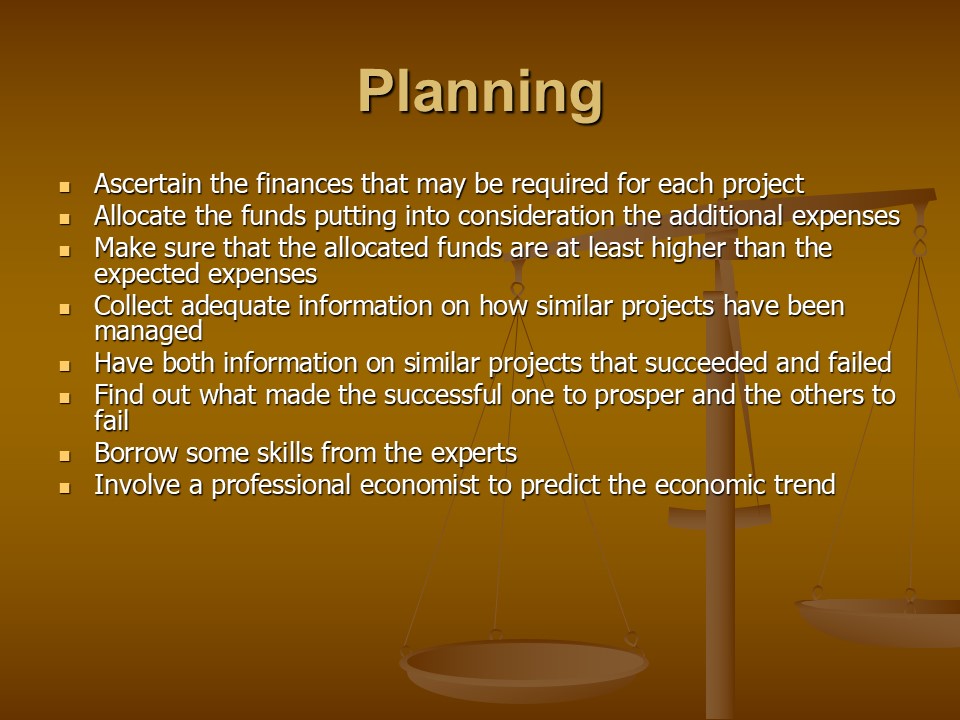
Consultation
- Make necessary enquiries from colleagues before making any decision;
- Network with other staff members to provide the necessary support;
- Welcome ideas and suggestions that may minimize the risk;
- Enquire from the companies treasury if there are enough funds for the project;
- Be willing and ready too change when the experts advice you so;
- Avoid making haste decisions (Pearson, 2007).
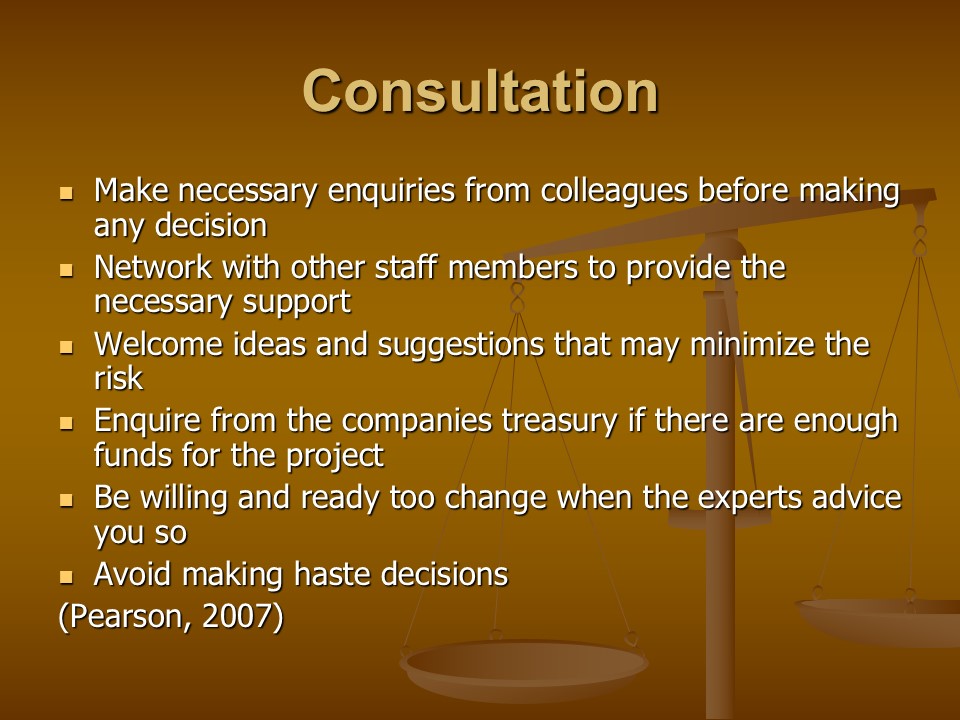
Research
- Carry out extensive research on the tests and preferences of the people;
- Get to know the kind of customers that you are targeting;
- Aim at satisfying the needs of your customers;
- Know the kind of sales promotion that could be applied to reach the targeted customers;
- You can use questionnaires or live recording for further analysis;
- Approach the prospective customers appropriately for a satisfactory report.
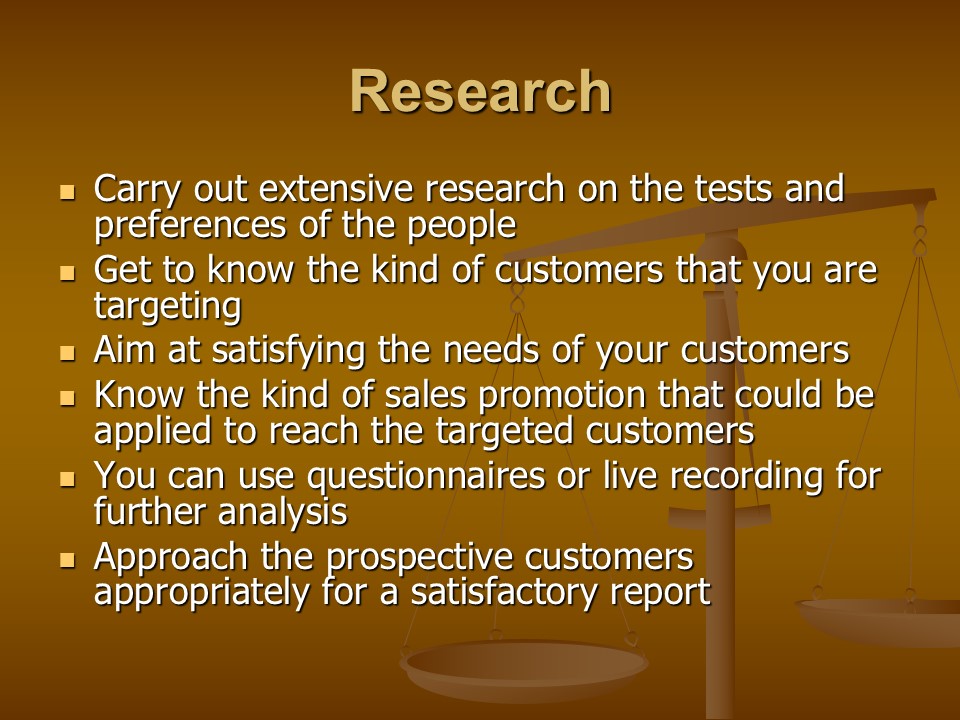
Alternatives
- Have alternative ways of implementing the project incase the first one does not work;
- Collect a variety of them and review their advantages and disadvantages;
- Choose the best alternative and rank the rest in order of priority;
- Ensure that the alternatives chosen will fit in the budget of the project;
- The alternatives should only be preferred after the main one completely fails.
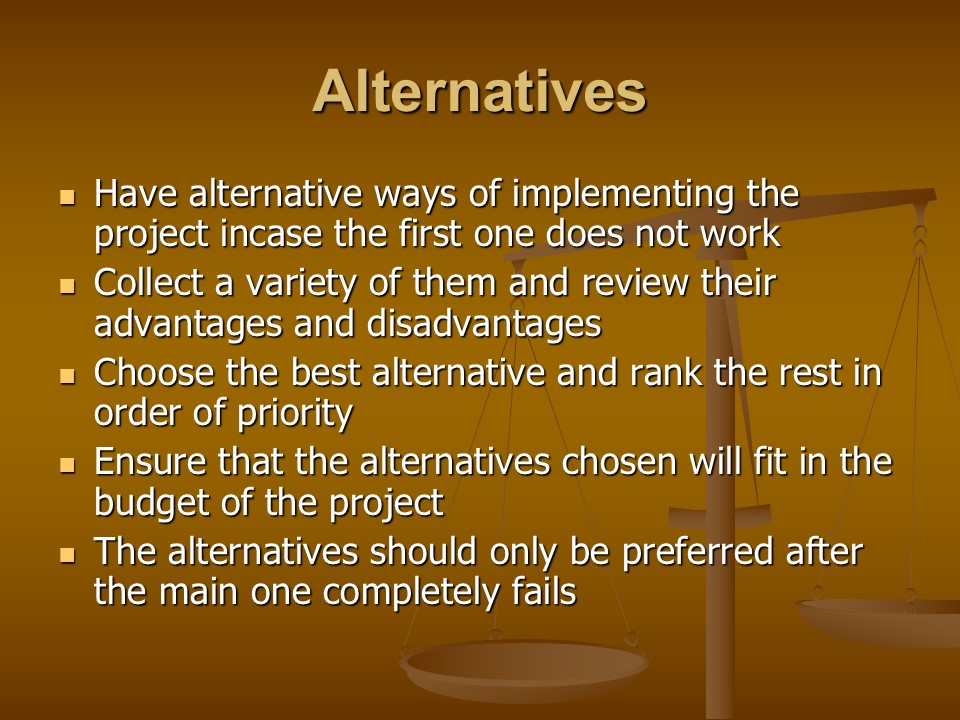
Keeping secrets
- Let the new project not leak out to other competitors before it is implemented;
- Share the project with only the experts and staff members that can be trusted;
- Avoid being exited so much about the project;
- Implement the project immediately after the necessary procedures to prevent it from leaking out;
- Do not market it before it is implemented (Broder, 2006).
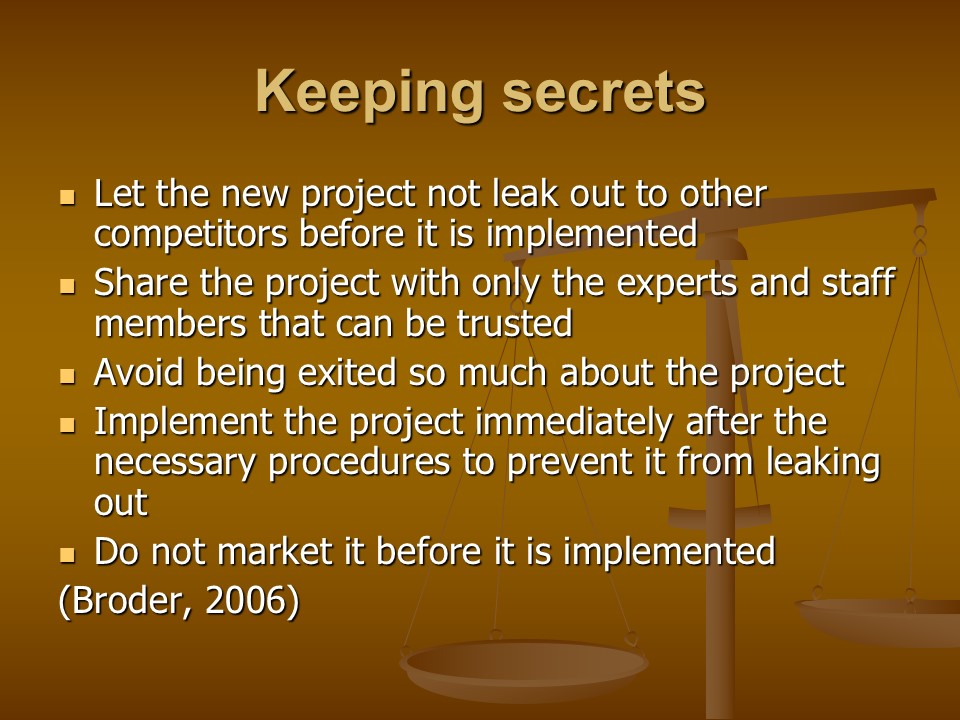
Marketing
- Make sure that adequate marketing is done once it is implemented;
- Appropriate sales promotion should be employed;
- The sales promotion methods should be economical and effective;
- Involve the entire staff in marketing the project;
- Do not give up when the sales pick up at a slower rate;
- Change the marketing criteria incase the progress is slow (Morgan, 2002).
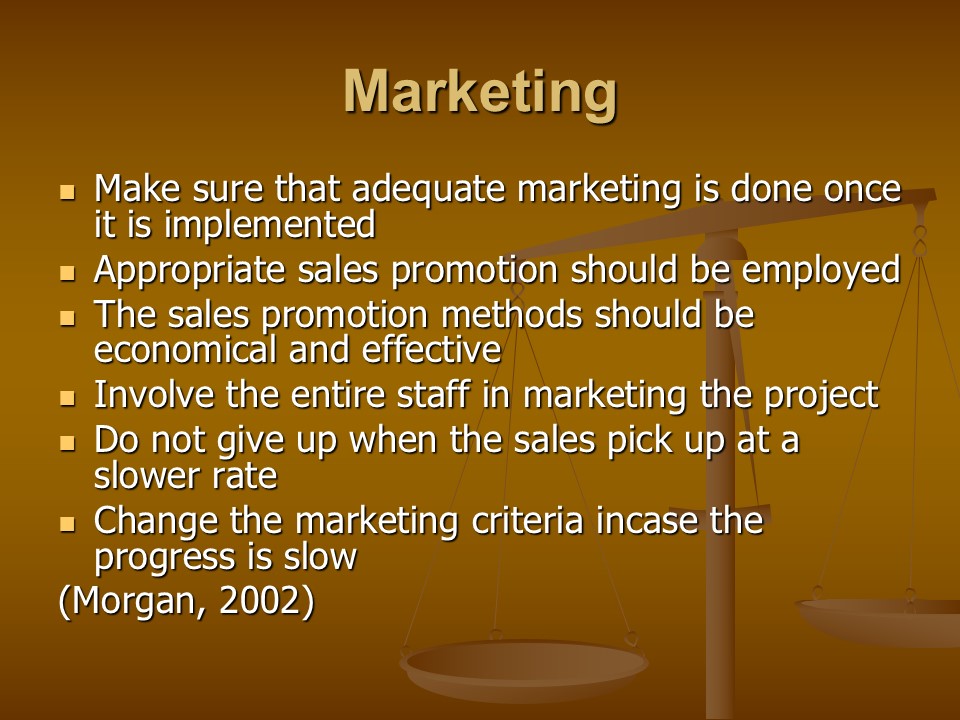
Incase of competition
- Do not panic and give up on the project; relax;
- With the help of an expert, find out what can be done;
- Try other sales promotion methods;
- If they fail, try improving on the quality of the project;
- Get to find out why the other products are being preferred;
- Learn from the mistakes and improve on them.
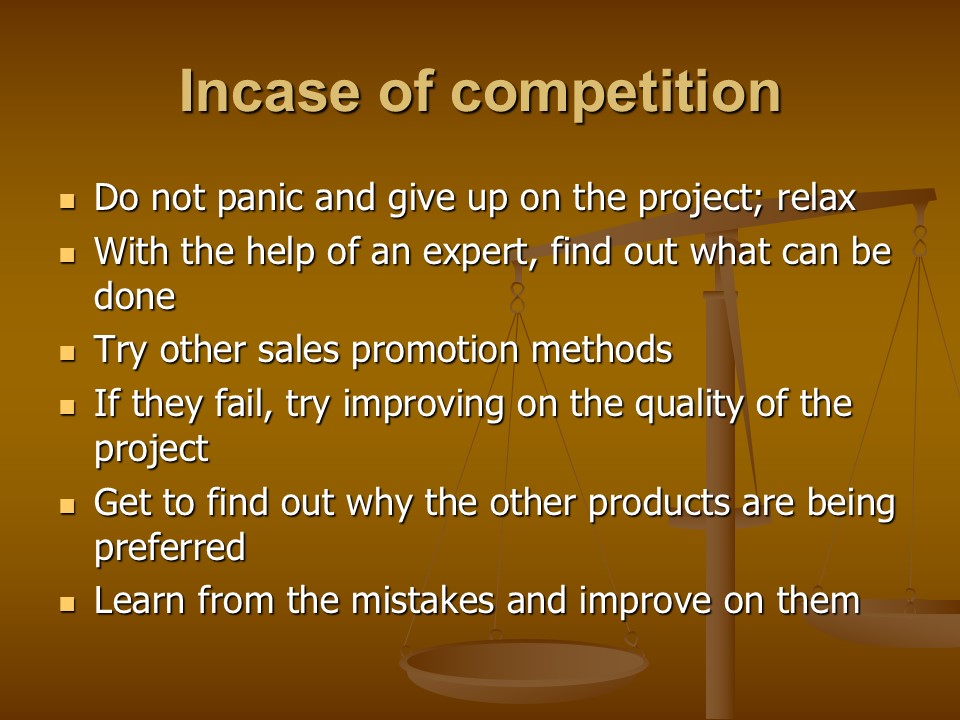
Maintaining the market share
- Do not stop marketing the product when it is selling;
- Observe the reaction of consumers towards the product;
- Make the necessary changes if it demands so;
- Ensure that the product reaches the consumers on time;
- Supervise your team efficiently;
- Keep a record of progress (Cooper, 2001).
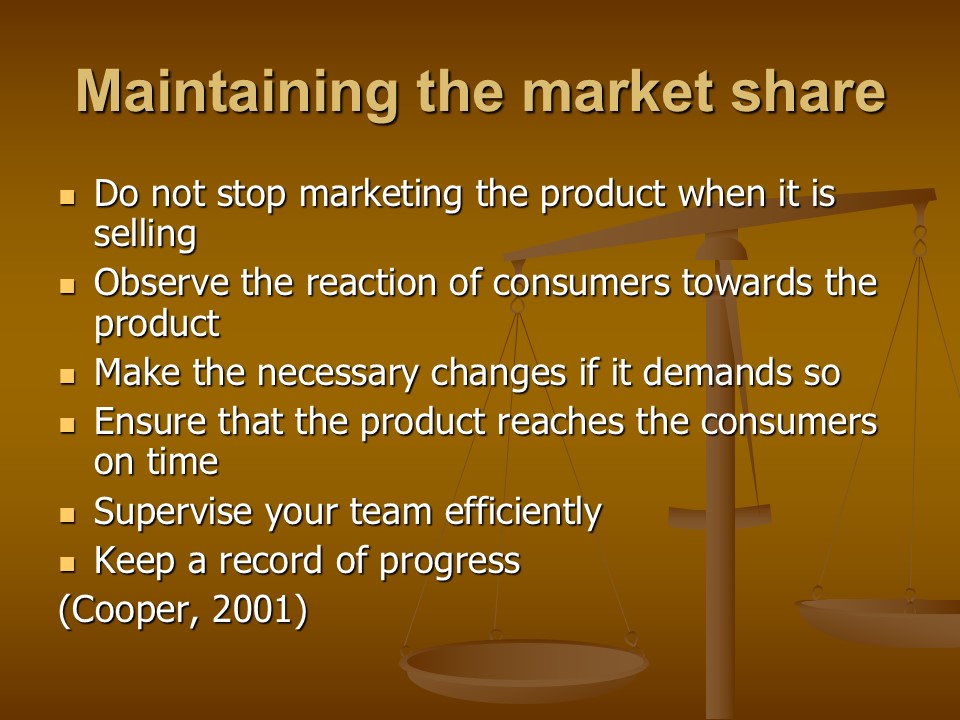
Conclusion
When the above procedures are adequately implemented, the risks that occur in the organization will be minimized. It is important for the supervisors to realize that the measures they undertake to handle the risk are the determining factors of it’s extend. They should learn from past mistakes and make sure that the same is not repeated.
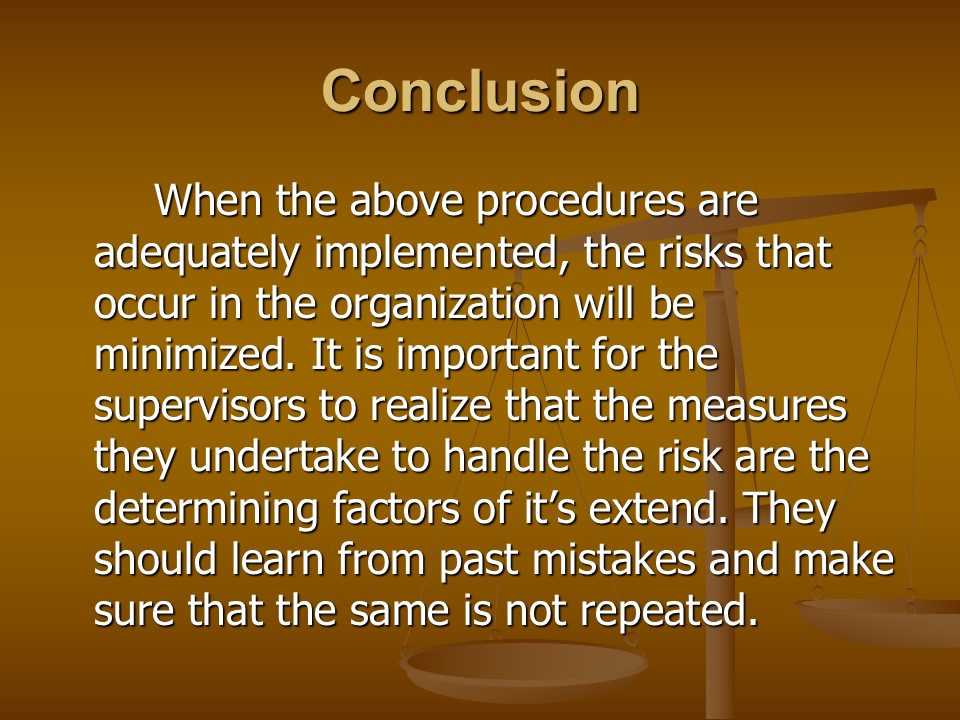
References
Broder F. (2006): Risk analysis and the security survey: Butterworth-Heinemann.
Cooper G. (2001): Winning at new products: Perseus.
Crouhy M. (2000): Risk Management: McGraw-Hill Professional.
Culp L. (2001): The risk management process: John Wiley and Sons.
Kerzner H. (2009): Project Management: John Wiley and Sons.
McKeeve P. (2007): How to write a business plan: Nolo.
Morgan G. (2002): Risk communication: Cambridge University Press.
Pearson M. (2007): International Handbook of Organizational Crisis: Sage Publications.
Pohlman B. (2008): Oracle Identity Management: CRC Press.